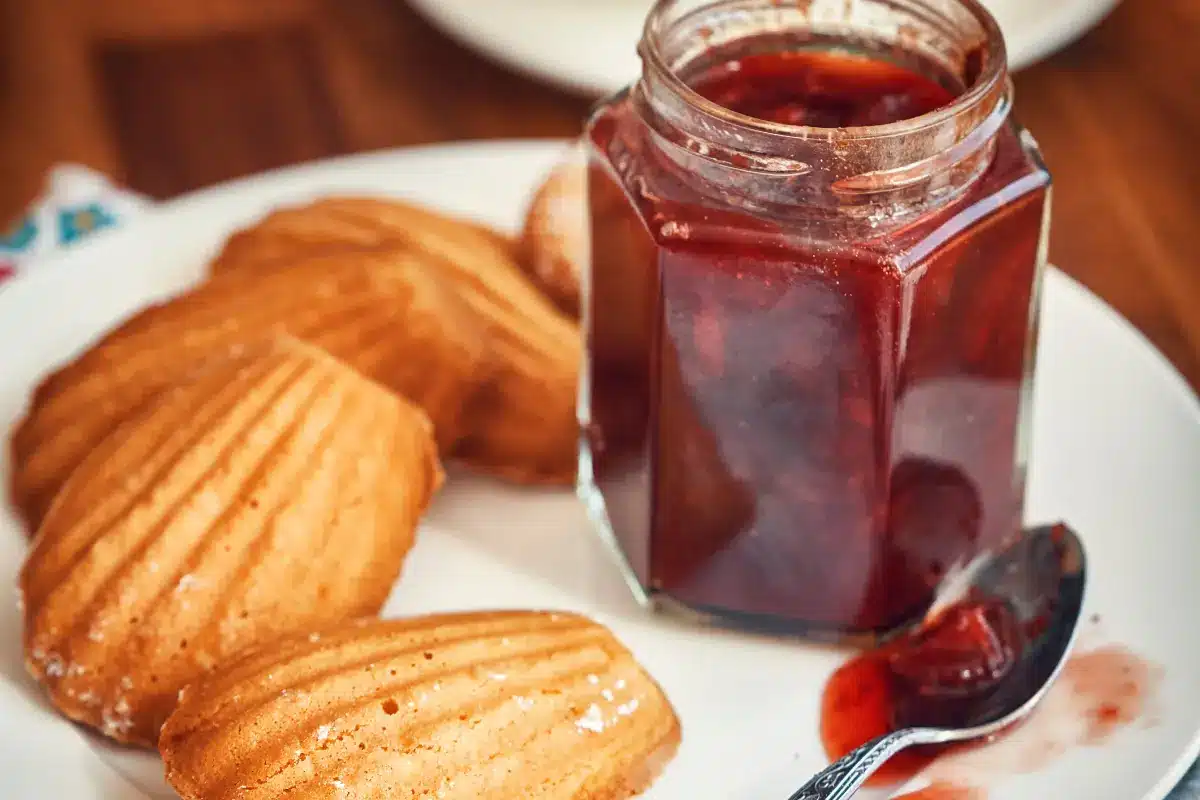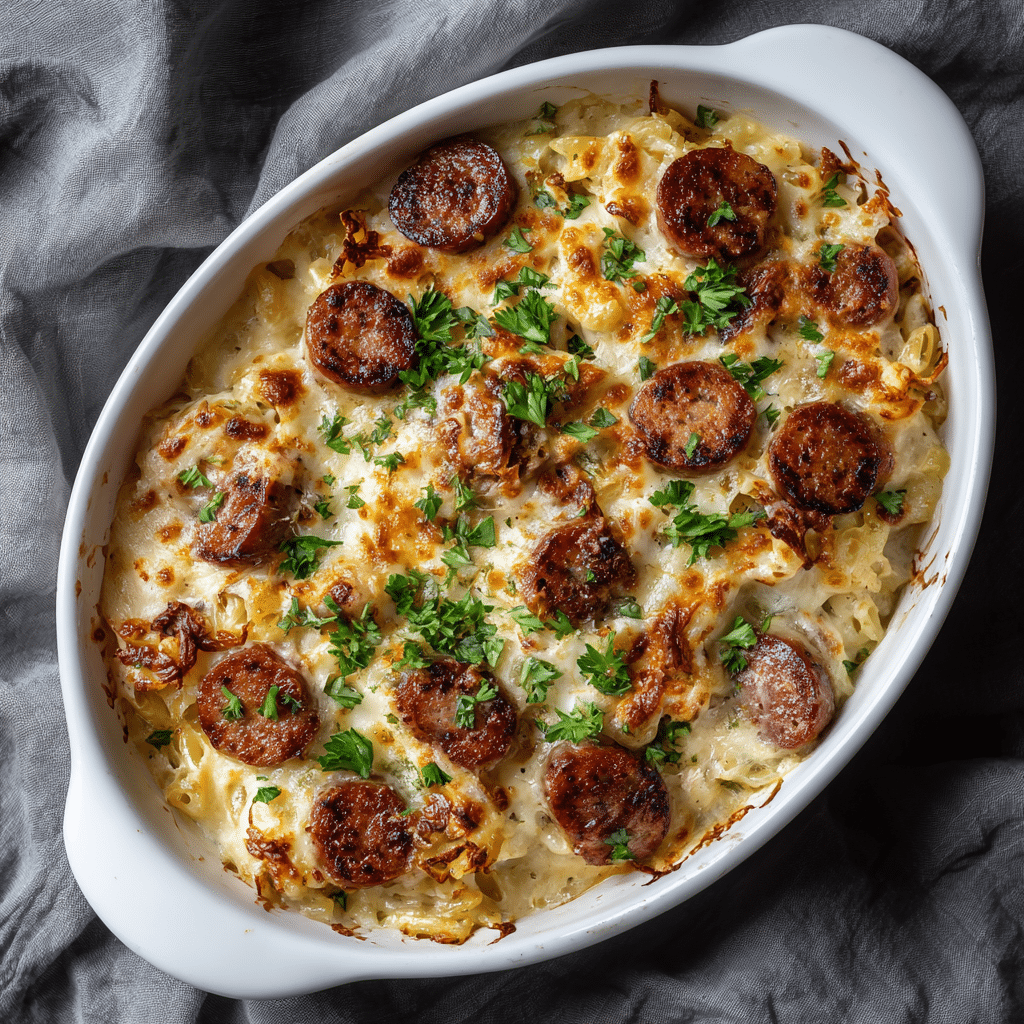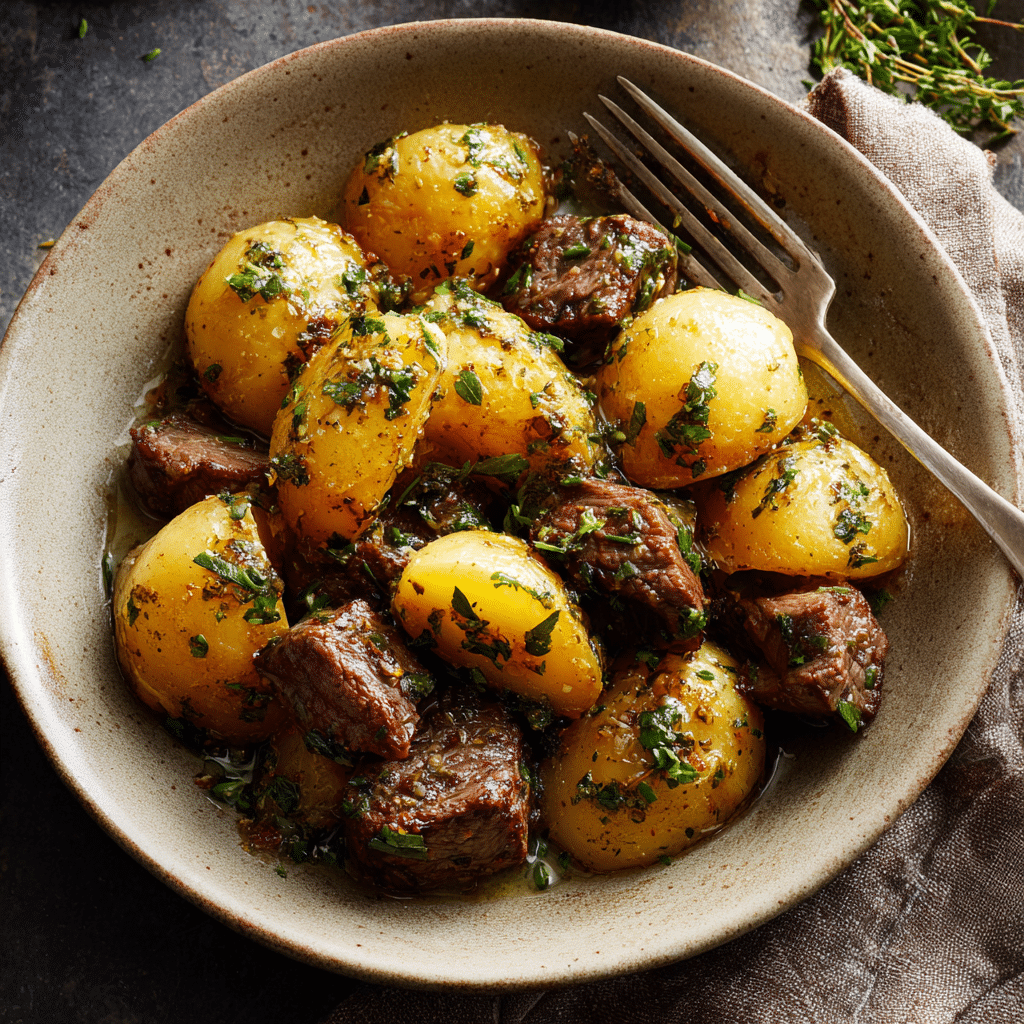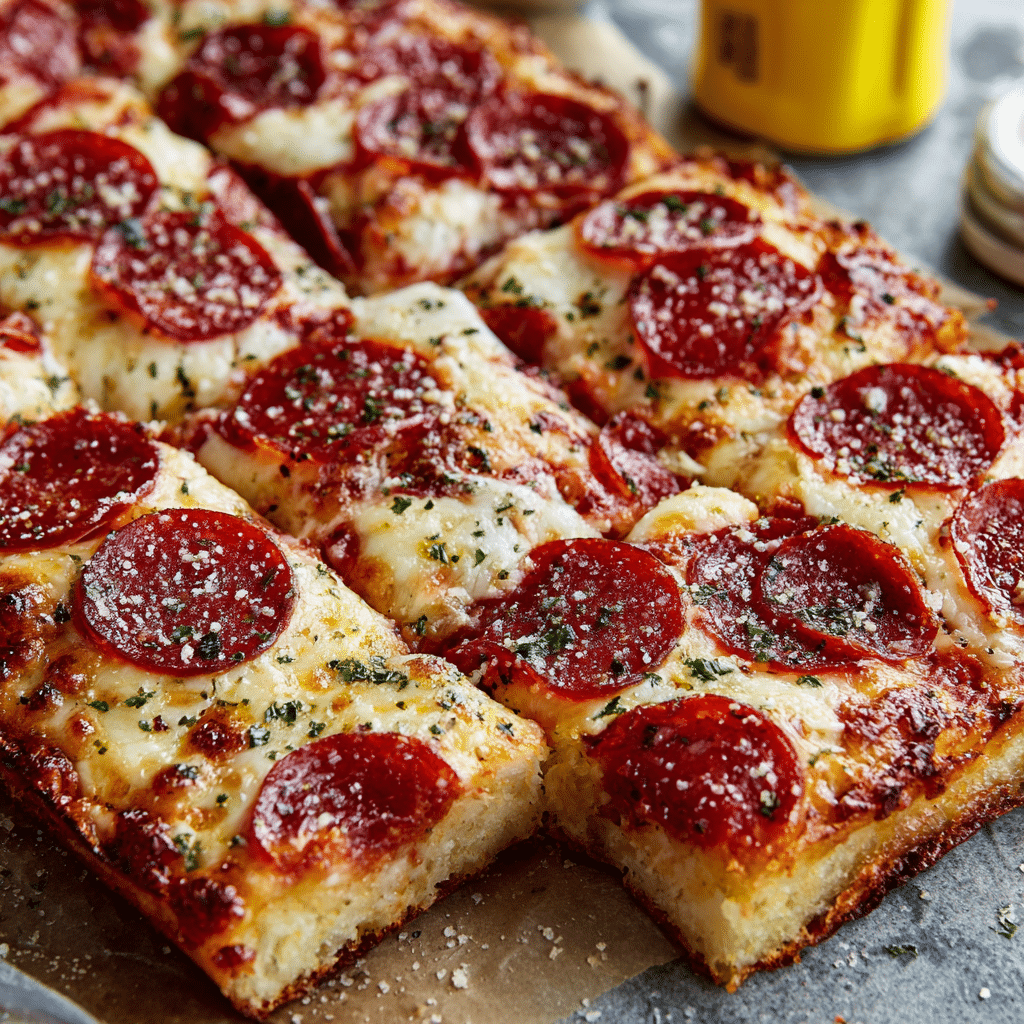Welcome, culinary adventurers and food enthusiasts alike, to a deep dive into the world of platanos, those starchy, versatile treasures of the tropics that have enriched our palates and cultural culinary landscapes. Within the pages of this comprehensive guide, we embark on a journey from the bustling markets where these golden gems are picked at their peak, through the myriad of ways to slice, dice, fry, and bake them, landing at last on your plate, transformed into a myriad of delectable dishes. So, tie on your apron, and let’s peel back the layers of this beloved fruit, exploring its rich history, nutritional prowess, and the endless culinary possibilities it presents.
The Rich History and Cultural Significance of Plantains in Cuisine
Platanos, or plantains as they are known in English, stand as pillars of tropical cuisine, their roots winding through history and across continents. Far from being just a banana’s tougher cousin, platanos boast a culinary flexibility that has made them a staple in the kitchens of Latin America, the Caribbean, Africa, and beyond. But oh, the journey they’ve taken to get onto our plates! From the ancient fields of Southeast Asia to the bustling markets of Havana, Kingston, and Lagos, plantains have traveled the world, whispering tales of colonization, migration, and cultural fusion with every slice and fry.
As we peel away their green or yellow skins, we’re not just preparing a meal; we’re uncovering centuries of history, a testament to the plantain’s resilience and the creativity of the cooks who have embraced it. Whether sweet and caramelized or savory and crisp, platanos invite us to explore the rich tapestry of global cuisine, offering a taste of home and adventure in every bite.
The versatility of platanos is unmatched, manifesting in countless recipes that speak to the soul of the regions they hail from. In the Caribbean, one might savor them fried and sweet, a perfect counterpoint to a spicy jerk chicken. Meanwhile, in West Africa, they might be pounded and shaped into fufu, a comforting staple. Across the waters in South America, plantains find themselves baked, stuffed, or turned into tostones, each dish a story of adaptation and flavor.
So, why do platanos hold such a revered place in our hearts and on our plates? Perhaps it’s their ability to bridge worlds, serving as a symbol of sustenance and survival, of family gatherings and festive celebrations. Or maybe it’s their simple, unassuming nature, reminding us that the most humble ingredients can be transformed into the most extraordinary meals.
Understanding Platanos
What Are Platanos?
In the heart of every bustling market and tucked away in the corners of tropical paradises lie platanos, a staple ingredient that has fed nations, inspired chefs, and brought families together around the dinner table. But what exactly are these starchy wonders? Platanos, or plantains, are a member of the banana family but are far more versatile in the culinary world due to their higher starch content and lower sugar levels. Unlike their sweeter cousins, platanos are usually cooked before eating, transforming them into a canvas for flavors as varied as the cultures that cook with them.
The Difference Between Plantains and Bananas
Though they share genetic ties, platanos and bananas lead very different lives in the culinary world. Bananas, with their sweet, soft flesh, are often eaten raw and savored as a quick snack or a dessert. Platanos, on the other hand, wear a cloak of complexity; they require the heat of a pan, oven, or grill to reveal their true potential. Green or yellow, firm or soft, each stage of ripeness opens up new possibilities for dishes, from savory to sweet, appetizers to desserts.
Varieties of Plantains
Diving deeper into the world of platanos, we uncover a diversity that mirrors the landscapes they hail from. There are over 1,000 varieties of plantains, each adapted to its environment and cherished in its local culinary tradition. Some are long and slender, others stout and robust, but all share the plantain’s characteristic resilience and adaptability. In the tapestry of plantain varieties, we find a reflection of the human experience – diverse, adaptable, and rich in history.
From the markets of Latin America, where green plantains are fried into crispy tostones, to the streets of West Africa, where ripe platanos are grilled over open flames, the plantain’s journey is as varied as it is delicious. With each variety comes a new flavor profile, a new texture, and a new opportunity to explore the boundless creativity that platanos inspire in kitchens around the world.
So, as we peel back the layers of this extraordinary fruit, let’s savor not just the taste but the stories they carry, the landscapes they’ve traversed, and the people they’ve nourished. Understanding platanos is to understand a piece of the world’s culinary heart, a step towards bridging cultures through the simple act of cooking and eating together. Join me as we continue our journey into the delicious world of platanos, exploring the myriad ways they can transform our meals and enrich our lives.
Classic Platanos Maduros Recipe (Sweet Fried Plantains)
Diving into the essence of plantain cuisine, we encounter a dish that embodies the sweet, comforting embrace of home cooking across the tropics: Platanos Maduros. This dish, simple in its ingredients yet rich in flavor, serves as a testament to the versatility and beloved nature of plantains. Here, we present a classic recipe that allows the natural sweetness of ripe plantains to shine, complemented by a golden, caramelized exterior that beckons with each bite.
Ingredients and Equipment
- Ripe plantains (2 large, should have black spots or be mostly black)
- Vegetable oil (for frying, about 1 cup depending on pan size)
- Paper towels (for draining excess oil)
Equipment Needed:
- Knife
- Cutting board
- Frying pan
- Slotted spoon
Step-by-Step Cooking Instructions
- Begin by peeling the plantains. Cut off both ends, make a shallow incision along the long seam of the plantain, and peel away the skin.
- Slice the plantains diagonally into ½ inch thick pieces. This thickness allows for a soft interior and a caramelized exterior.
- Heat the vegetable oil in a frying pan over medium heat. You’ll want enough oil to cover the bottom of the pan and come up about ¼ inch.
- Carefully place the plantain slices in the hot oil. Fry in batches to avoid overcrowding, which can lower the oil’s temperature and result in soggy plantains.
- Fry each side for 2-4 minutes or until golden brown and caramelized. Adjust the heat as needed to prevent the outside from burning before the inside is tender.
- Use a slotted spoon to remove the plantains from the oil and transfer them to a plate lined with paper towels to drain any excess oil.
- Serve warm as a delightful side dish, dessert, or snack. Platanos maduros pair beautifully with a variety of meals, adding a touch of sweetness to balance savory flavors.
Serving Suggestions
Platanos Maduros can be enjoyed in many ways, making them a versatile addition to any meal. Serve alongside rice and beans for a classic Latin American dish, or use them to complement grilled meats and vegetables. For a sweet treat, top with a sprinkle of cinnamon or a dollop of cream.
This classic Platanos Maduros recipe invites you into the world of plantain cooking, where simplicity meets exquisite taste. As we continue our journey through the versatile and vibrant world of platanos, let’s carry with us the joy of cooking dishes that speak to the heart, celebrating the rich flavors and traditions that plantains bring to our tables.
Exploring More Platanos Recipes
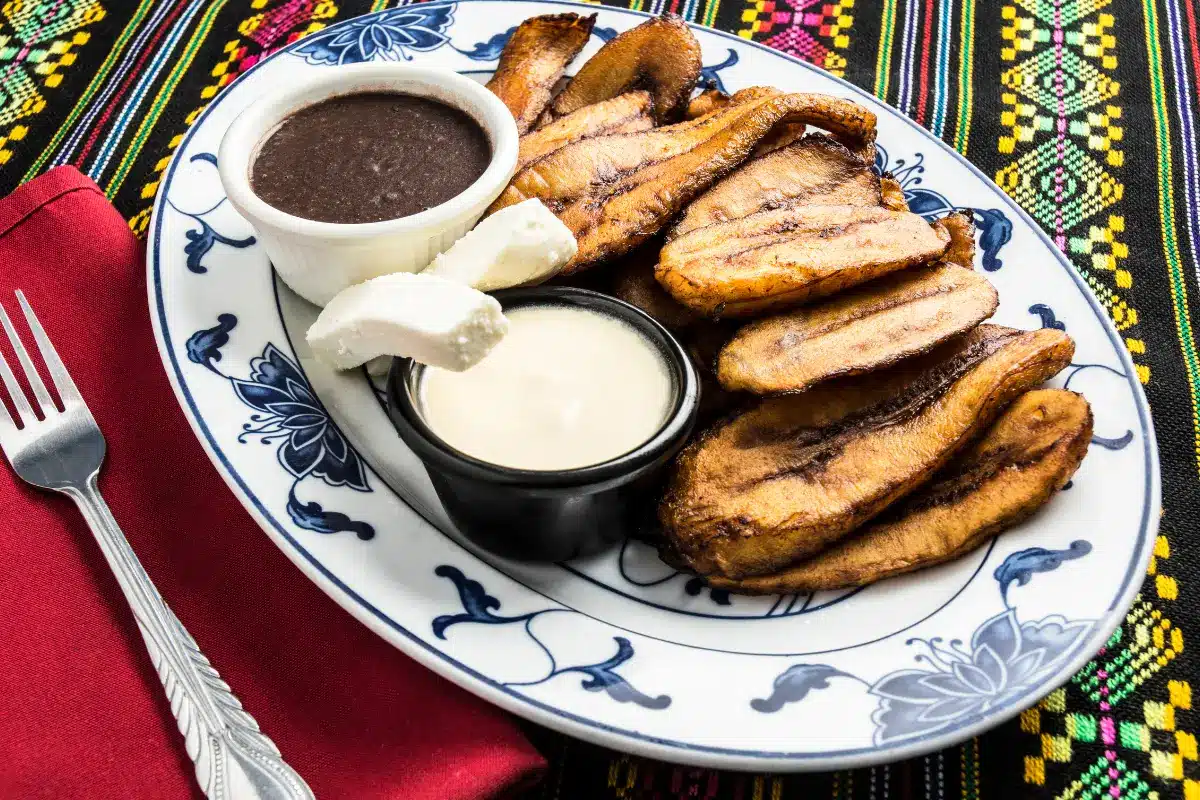
With the foundational skills of selecting, preparing, and cooking platanos under our belts, we’re now ready to venture further into the rich tapestry of plantain cuisine. Plantains, with their remarkable versatility, serve as the cornerstone for an array of dishes that span the spectrum from savory to sweet, from simple snacks to elaborate entrees. Here, we explore additional recipes that showcase the breadth of flavors and textures that platanos can bring to your culinary repertoire.
Platanos al Horno (Baked Plantains)
- Ripe plantains (4, yellow with black spots)
- Butter (2 tablespoons, melted)
- Brown sugar (2 tablespoons)
- Cinnamon (½ teaspoon, optional)
- Equipment: Baking sheet, parchment paper
Instructions:
- Preheat your oven to 375°F (190°C) and line a baking sheet with parchment paper.
- Peel the plantains and slice them lengthwise into halves.
- Arrange the plantain slices on the baking sheet and brush each with melted butter.
- Sprinkle the brown sugar (and cinnamon, if using) evenly over the plantains.
- Bake for 20-25 minutes, or until the plantains are tender and caramelized.
- Serve warm as a side dish or dessert, perhaps with a scoop of ice cream for an extra treat.
Platanos Fritos (Fried Plantains)
- Green plantains (3, for a savory version)
- Vegetable oil (for frying)
- Salt (to taste)
- Equipment: Knife, cutting board, frying pan, slotted spoon
Instructions:
- Peel the plantains by cutting off the ends and making a longitudinal incision through the skin.
- Slice the plantains into 1-inch thick rounds.
- Heat oil in a deep frying pan over medium-high heat. The oil should be hot but not smoking.
- Fry the plantain rounds in batches, turning once, until golden brown on both sides.
- Remove the plantains with a slotted spoon and drain on paper towels. Flatten each round with the bottom of a glass or jar.
- Return the flattened plantains to the hot oil and fry again until crispy.
- Season with salt and serve immediately as a snack or side dish.
Creative Plantain Dishes
Dive into creativity with plantains as your muse. Consider making plantain pizzas with sliced plantains as the base, topped with tomato sauce, cheese, and your favorite toppings. Or, explore plantain lasagna, where layers of ripe plantains replace traditional noodles for a tropical twist on a classic dish.
The world of platanos is vast and varied, each recipe a doorway to new flavors, traditions, and culinary experiments. Whether baked, fried, or transformed into the foundation of a dish, plantains offer endless possibilities for chefs and home cooks alike to explore and enjoy.
In our journey through the world of plantains, we’ve peeled, sliced, fried, and baked, discovering the incredible versatility and rich cultural heritage of this beloved fruit. As we move towards the nutritional benefits of plantains, let’s carry with us the joy of cooking and the excitement of exploring new dishes that celebrate the unique flavors and textures of platanos.
Selecting and Storing Plantains
How to Select and Store Platanos
Diving into the world of platanos begins with a trip to the market or grocery store, where the vibrant hues of green, yellow, and sometimes black-skinned plantains await. But, with such variety on display, how does one choose the perfect plantain for their culinary creation?
Choosing the Right Plantains for Your Recipe
Selecting the right plantain is akin to choosing the right key for a lock. It all hinges on the dish you’re aiming to prepare. For savory dishes that require firmness and a mild, starchy flavor, green plantains are your best bet. These are ideal for making tostones, chips, or for adding into soups and stews. As plantains ripen, turning yellow and then black, they develop a sweetness that lends itself beautifully to desserts and sweet side dishes. So, whether you’re aiming for the crispness of fried platanos or the caramelized sweetness of platanos maduros, your recipe’s success starts with picking the right stage of ripeness.
Storing Plantains at Home
Once home, the way you store your plantains can significantly impact their shelf life and final taste. Green plantains will ripen over time at room temperature, gradually becoming sweeter. If you’re not ready to use ripe plantains, popping them in the fridge can slow down the ripening process, buying you some extra time. However, be mindful that cold storage can alter their texture slightly. For those who find themselves with an abundance of ripe plantains, fear not! They freeze remarkably well. Simply peel and slice your plantains, place them in a freezer-safe bag, and you’ll have a stash ready for future culinary adventures.
Understanding the lifecycle of a plantain from the market to your kitchen not only ensures the best outcome for your dishes but also deepens your connection to the ingredients you use. Each plantain, with its variety and stage of ripeness, holds potential for creativity and exploration in the kitchen.
So, as you stand before the array of plantains in your local market, remember that you’re not just selecting a piece of produce. You’re choosing an ingredient steeped in history and versatility, ready to be transformed into a dish that delights the senses and brings people together. In the next section of our journey, we’ll explore the many ways platanos can be prepared, delving into techniques that unlock their full culinary potential.
Preparation Techniques
Preparing Platanos for Cooking
Embarking on a platanos culinary adventure begins with mastering the art of preparation. Unlike their softer, sweeter relatives, platanos demand a bit of technique to unveil their full potential. Whether you’re a seasoned plantain aficionado or a curious newcomer, understanding the basics of preparing platanos can transform your cooking experience.
Peeling and Cutting Techniques
Peeling platanos is not as straightforward as peeling a banana. Their thicker skin and firmer flesh require a slightly different approach. Start by slicing off both ends of the plantain. Then, make a shallow cut lengthwise along the seams of the skin. For green plantains, you might need to use the edge of your knife to gently lift and peel away the skin. For riper plantains, the skin may come off more easily. Remember, the goal is to preserve the flesh intact for slicing.
Once peeled, the way you slice your plantain can influence the texture and cooking time of your dish. For crispy tostones or chips, slice thinly and diagonally for more surface area. For sweet, caramelized platanos maduros, thicker slices will ensure a soft, tender inside with a golden exterior. Experimenting with different cuts can lead to delightful discoveries in texture and taste.
To Fry or To Bake? Different Cooking Methods Explored
Platanos lend themselves to a variety of cooking methods, each bringing out a unique flavor profile and texture. Frying is perhaps the most popular method, ideal for achieving that irresistible combination of crispy edges and soft, warm centers. Whether shallow frying for tostones or deep frying for chips, the key is in maintaining the right oil temperature to ensure even cooking without absorbing excess oil.
Baking offers a healthier alternative, allowing the natural sugars in ripe plantains to caramelize and develop depth of flavor. Baked platanos can be seasoned with spices, brushed with oils, or simply roasted in their skins for a fuss-free side dish.
Exploring these preparation and cooking techniques opens up a world of possibilities, inviting creativity and experimentation into your kitchen. Each slice, each method of cooking, brings you closer to mastering the art of platanos cuisine, turning simple ingredients into extraordinary meals.
As we move forward in our culinary journey, the allure of platanos only grows stronger, beckoning us to delve deeper into the recipes and dishes that have made this humble fruit a beloved staple across cultures. In the next part, we’ll step into the heart of platanos cooking with a classic recipe that embodies the soulful warmth and rich traditions of plantain cuisine.
Frequently Asked Questions
As we wrap up our delicious journey through the world of platanos, it’s natural that you might have some lingering questions. Below, we’ve tackled a few common ones, aiming to shed light on any remaining mysteries.
Can plantains be eaten raw?
Interestingly, unlike their sweeter counterparts, bananas, plantains are usually cooked before they’re enjoyed. They’re not as sweet and are quite hard in texture when raw, which makes them less appealing for direct consumption. Therefore, to truly savor their flavor, cooking them is the way to go.
How do you know when plantains are ripe enough to cook?
Determining the perfect moment for cooking plantains depends largely on the dish you have in mind. For savory dishes, green plantains, which are firm and starchy, are ideal. Conversely, if you’re leaning towards a dish with a balance of sweetness, yellow plantains are your best bet. Finally, for those dishes where sweetness is paramount, black plantains are most suitable. This gradient of ripeness opens up a spectrum of culinary possibilities.
What are some common dishes that feature plantains?
Plantains grace our tables in an array of dishes across the globe. For instance, in Latin America, tostones and maduros are beloved. Meanwhile, in Africa, plantains find their way into stews or are served grilled. The Caribbean offers crispy plantain chips, a snack loved by many. Additionally, Puerto Rico brings us mofongo, a dish that’s as fun to say as it is to eat. This diversity showcases the plantain’s incredible versatility and the rich culinary traditions it’s a part of.
By addressing these frequently asked questions, we hope to have illuminated the path for your next culinary adventure with plantains. Whether you’re experimenting in the kitchen or enjoying the fruits of your labor, plantains offer a world of flavor just waiting to be explored. So, why not dive in and see where this journey takes you next?
